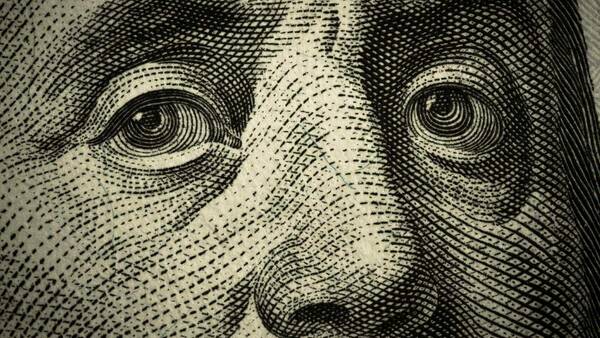President Biden recently took the executive decision to write off a portion of student debt. Specifically, he plans to cancel up to $20,000 in debt for Pell grant recipients (typically those on lower incomes) and $10,000 for non-Pell grant recipients. With a view to fairness, this relief will be granted only to those earning less than $125,000 a year ($250,000 for married couples). The goal of this write-down is to provide some relief to those who borrowed for college and yet face a millstone of debt—including those who never managed to get a degree but are nonetheless saddled with debt.
This relief has been criticized on two separate grounds, both based on fairness arguments. The first argument says that Biden’s action favors those who went to college over the two-thirds of adults who did not. This argument has some validity. While it might be progressive among those who attended college (given the income cap and the fact that the wealthy tend not to have student debt), it is hard to make this case for the population as a whole. The second argument says that it is unfair to those who struggled to pay their debts. You should simply pay what you owe, this argument goes. This argument sounds reasonable. The problem is, though, it would rule out any form of debt relief whatsoever. And it would challenge any form of redistribution or policy initiative in which there are some winners and some losers.
What I want to argue here is that debt relief is a core component of biblical justice. To do this, I will be borrowing from the first chapter of my book, Cathonomics. I will discuss briefly what the Hebrew Scriptures and the Gospels say about debt.
In the Hebrew Scriptures, obedience to God’s law meant ensuring that institutions aided rather than oppressed the poor, because God is always the defender, protector, and liberator of the poor. This has numerous implications when it comes to debt. For instance, the Hebrew Scriptures include a strong injunction against usury, i.e., taking interest on a loan. In an agrarian society, this would have been one of the most obvious ways to oppress the poor. In such a society, farmers would typically seek loans in times of crop failure and other disasters that could mean the difference between life and death. The prohibition on usury was extended into Christian times and is now seen as synonymous with excessively high-interest rates.
The most well-known economic injunctions in the Hebrew Scriptures relate to the various “cycles of seven”—the Sabbath day, the sabbatical year, and the Jubilee. Every seventh year was a sabbatical year, when fields were supposed to be left untilled so that the poor could feed from them. More than that, all agrarian debts were to be forgiven, and those who had sold themselves into slavery because of their debts—a common occurrence in the ancient Near East, especially in response to drought and crop failures—were to be released.
The most radical redistribution of all occurred on every seventh sabbatical, which was known as a Jubilee year. During this year, all the requirements of the sabbatical remained in place, with the addition that any land or crop rights either sold under duress or pledged to creditors since the last Jubilee were to be returned to the original owners. The justification was that the land belonged to God, and that human beings only had conditional ownership of it. As Leviticus says, “The land shall not be sold irrevocably; for the land is mine, and you are but resident aliens and under my authority” (Lev 25:23).
To the modern reader, these injunctions seem radical indeed. But we must ask the question: were these laws ever carried out? Or were they left in the domain of pious wishful thinking? Some have certainly made the latter claim. But in important work, Michael Hudson and David Graeber claim that debt cancellations were real, commonplace, and served a valuable social purpose.
Hudson demonstrates that in Bronze Age Mesopotamia, new rulers would frequently issue “clean slate” decrees, which canceled agrarian debts, liberated those in debt bondage, and reversed land forfeitures. These actions would serve to restore economic balance and preserve a land-tenured citizenry as the source of military fighters, public labor, taxation—and social stability as a whole. Without clean slates, and given the frequency of droughts and crop failures, credit oligarchies would have ended up controlling the land, in turn posing a threat to royal officials. So, clean slates reflected an element of self-interest as well as justice.
Clean slates mostly occurred on the accession of new rulers; it was the ancient Hebrews that made them regular occurrences, which provided an important element of predictability. They eventually fell into disuse during the Iron Age, as creditors began to gain more political power—culminating in Roman law, which we have inherited, giving supremacy to creditors over debtor rights. In a sense, we have inherited Roman-era teachings on creditor primacy—a far cry from biblical notions of justice.
Debt also permeates the world and the teachings of Jesus. When he speaks the language of sin and mercy, he typically brings up the image of debt, which would have resonated deeply with his listeners—poor people oppressed by unscrupulous landlords, Roman tax farmers, and their local agents.
The starting point is to pay close attention to how Jesus begins his public ministry. In Luke’s Gospel, Jesus enters the synagogue in his hometown of Nazareth and reads from the scroll of the prophet Isaiah. This is what he reads: “The Spirit of the Lord is upon me, because he has anointed me to bring glad tidings to the poor. He has sent me to proclaim liberty to captives and recovery of sight to the blind, to let the oppressed go free, and to proclaim a year acceptable to the Lord” (Luke 4:18-19). Once again, Michael Hudson argues that people would have made the association between “liberty” and crippling debt and the “year of the Lord’s favor” with the Jubilee of the Hebrew Scriptures.
Hudson argues that Jesus’s strenuous criticism of the Jewish authorities at the time reflects unease with the legalistic mechanisms they had devised to take away the strong scriptural bias in favor of debtors, aligning themselves more with the Greco-Roman legal system and its creditor oligarchies. In the Synoptic Gospels, Jesus teaches thirty-one parables. As theologian Elizabeth Hinson-Hasty notes, nineteen of these refer to indebtedness, social class, misuse of wealth, the distribution of wealth, and worker pay. Jesus cared deeply about economic circumstances, and he chose the examples he knew would resonate with his listeners.
In the Lord’s Prayer, Jesus uses debt as a metaphor for sin—something that David Graber argues was a common practice in the ancient world. The theologian David Bentley Hart argues that the second part of the Lord’s Prayer would have been understood as directly connected to the debt courts and debt bondage. Here is his translation: “grant us relief from our debts, to the very degree that we grant relief to those who are indebted to us. And do not bring us to court for trial, but rather rescue us from the wicked man.” For Hart, this is a prayer for the poor. He ties the prayers to “how often Jesus speaks of trials, of officers dragging the insolvent to jail, of men bound by or imprisoned for undischarged debts, of unmerciful creditors, of suits brought before judges to secure a coat or cloak, of the unfortunate legally despoiled by the fortunate.”
This was an all-too-real social reality, in which the poor, crippled by taxes, were frequently reduced to the status of indentured tenants following expropriation and oppressive terms of loans. In this telling, the tax collectors, loan sharks, and law courts all conspired against the poor, the people to whom Jesus preached liberty and the coming of the Kingdom.
We tend to forget all this today because we live in a world of creditor primacy—in which paying one’s debts is considered a moral obligation. But in both the Hebrew Scriptures and the New Testament, there was a different attitude to debt. All too often, debt weighed down the poor, who needed relief.
Is the same not true today? The case can certainly be made for student debt, especially since it is really difficult for this debt to be discharged through bankruptcy. Simply insisting that all debt contracts must be respected in full would rule out any debt relief, which is not in accord with biblical justice.
We can go further than student debt. The economists Atif Mian and Amir Sufi have argued that what really caused the deep recession in the wake of the global financial crisis was excessive household debt rather than financial disintermediation. But while the Obama administration was happy to bail out the large financial institutions, it refused to institute any meaningful debt relief for homeowners. Even the mere suggestion that mortgage-holders be bailed out lit the spark of the Tea Party movement. This shows how hard it is to implement meaningful debt relief when people associate justice with paying what you owe.
One final point: while the strict injunction against charging interest on a loan has been relaxed, the prohibition on usury remains, especially when this excessive interest preys on the poor. Think again of the subprime mortgage crisis, when unscrupulous lenders offered attractive “teaser rates” to people who wanted to take out a mortgage, with huge payments over the coming years hidden in the small print. Think also of high-interest rates on credit card debt and payday loans, which, again, target the poor who often find themselves with an unexpected expense that must be financed.
To conclude, I would argue that debt relief is one of the ways to achieve the universal destination of goods, the notion that the goods of creation and human labor are designed for the use of all. When we think about this essential principle of Catholic social teaching, we typically point to such elements as just wages, the provision of the material bases of human flourishing, and a habitable natural environment. But debt relief is part of it too. It has been since the very beginning.
EDITORIAL NOTE: Portions of this essay are borrowed from Cathonomics: How Catholic Tradition Can Create a More Just Economy, courtesy of Georgetown University Press, ALL RIGHTS RESERVED.


